Mobile Indie Spotlight Episode #6: GeoTap Game
In this episode we have the honour to host Eric Howard and Jeff Toll from Lucre Games. Their app GeoTap managed to grab the attention of Google Play’s team and got featured there, in March 2018. GeoTap is a free-to-play casual game where users can colour the sides of low poly geometric shapes. The game helps reinforcing colour and shape recognition for kids and testing patience and dexterity for all ages.
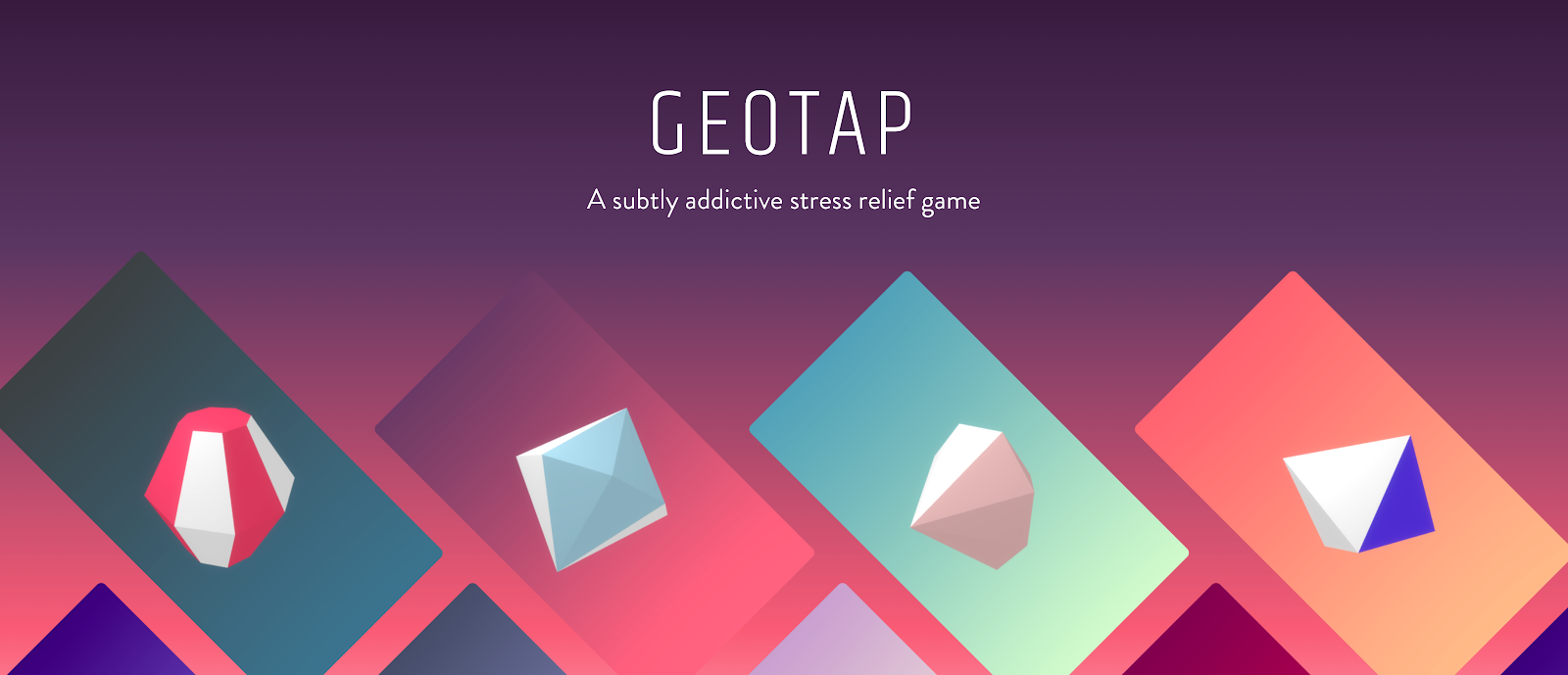
?Hello guys, can you share a few words about you and Lucre Games?
Hey there! We’ re Jeff and Eric from Lucre Games, an indie game studio based in Sacramento, California. Our games aim to be balanced artistically and mechanically. We shipped our first mobile game, GeoTap, in January 2018 which was featured on the Google Play store and became #1 trending casual game for the time. We are actively developing two mobile games and will branch into PC and consoles soon after.

?What is the story behind GeoTap?
Our team started out as a game jam group, regularly meeting to create small experiential demos. At our days jobs, we were colleagues at a digital creative agency and wanted to move past game jams games and ship something in our spare time. Over lunch one day, GeoTap was conceived as a game that would be simple, relaxing and beautiful. It would be a mobile game with a single screen tap interaction, where a user would colour in artistic, low poly shapes at their own pace. We worked in our spare time to concept and design the interface and prototype the game interactions. After 3 weeks we had a shippable version to publish. You can read the whole story and key findings here.
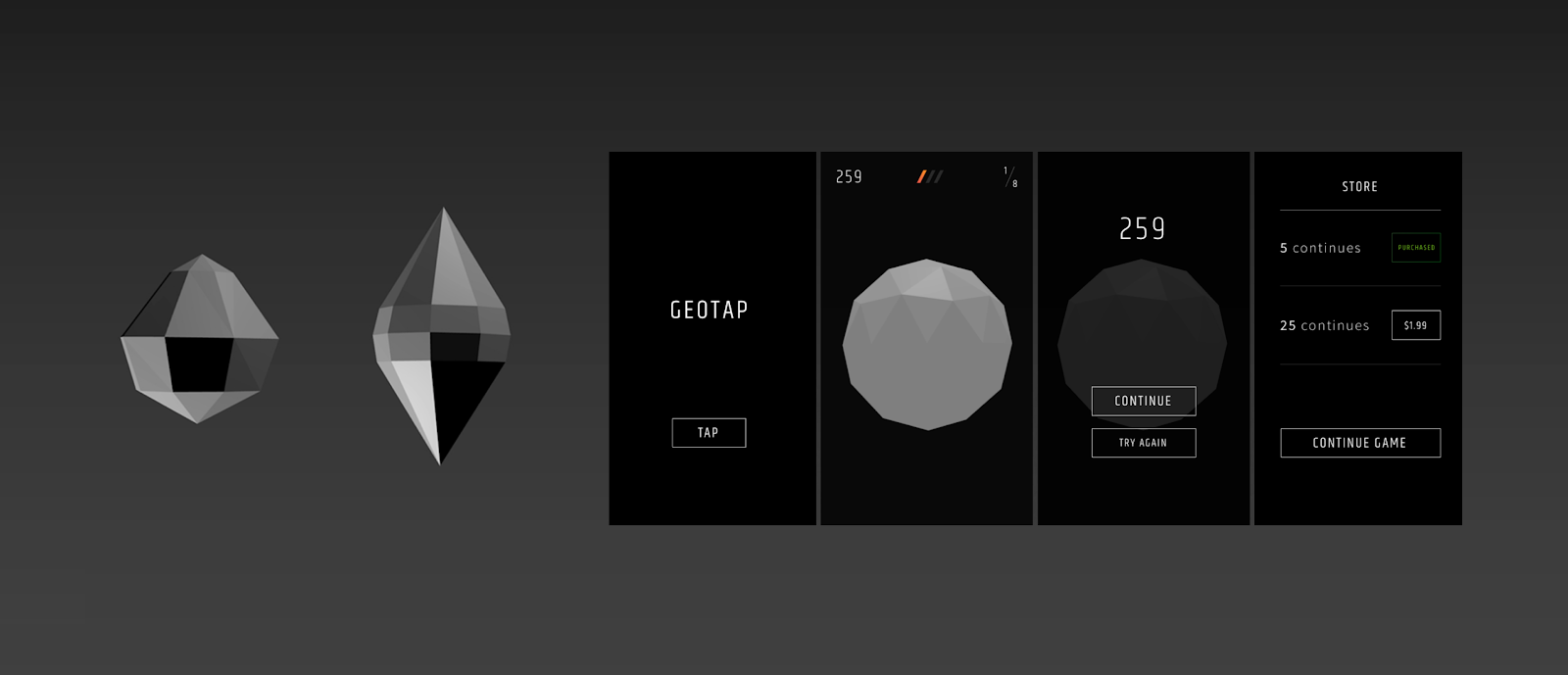
After receiving very positive feedback from users, friends, and family, we decided to put more energy into the game to round out the experience. We added new game modes, unlock-able content, a coin system to reward players, and a more intelligent, player-friendly ad monetization design. All of those efforts got us featured in the Google Play Store, a spot in the Play Store’s Indie Corner, and an invitation to Casual Connect 2018 in Anaheim to present our game as an Indie Prize nominee. We were thrilled that our humble game was getting this kind of recognition.

?What is the current status of the game?
GeoTap received its final update in September of 2018. We rebalanced some of our mechanics and added three new game modes, for a total of six. We’ve had just over 200,000 app installs between Android and iOS, with the majority coming from the Google Play Store feature.
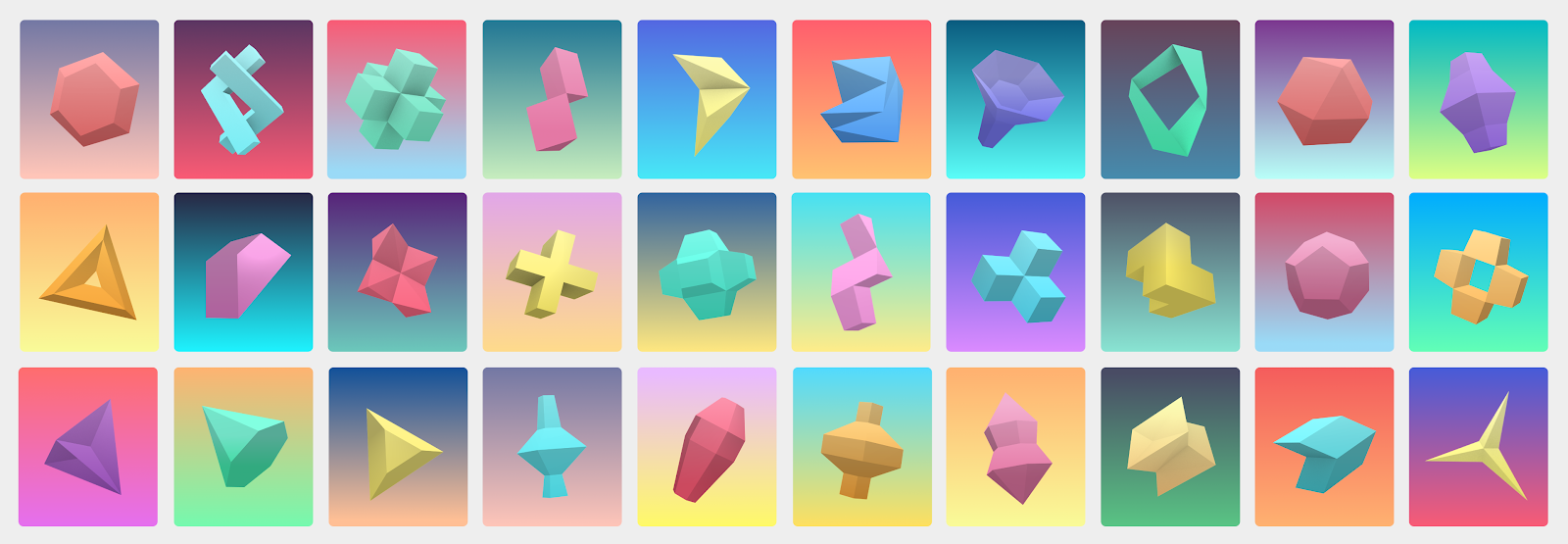
?Which engine did you choose and why?
Our team focuses on Unity and web development. We chose Unity to make GeoTap because of its multi-platform support, the great content editing interface and their ads and analytics services.
?How did you launch the game?
We soft launched the game after three weeks of design and development, without expecting much. Our primary goal was to take a small concept all the way to market. Getting a positive reception was icing on the cake! The feedback from many people was that GeoTap was a great game for finding focus, almost like a digital stress ball, which was definitely one of our design intents. We knew the soft launched version was missing the features of a typical casual game scope, so we decided to fill it out. The updated version launched in January of 2018, just in time for the Play Store feature.
?How did you manage to get featured on Google Play?
We walked in the front door! There’s a program called Start on Android, which pairs a development agent with studios and helps them support their products on the Play Store. We submitted, were accepted and our contact, who was incredibly helpful, immediately asked us to submit the game for a feature. We did and were accepted! The big caveats were adding translation support and meeting Google’s UI and UX guidelines by the feature date. We spent a couple weeks updating to Google’s specifications.
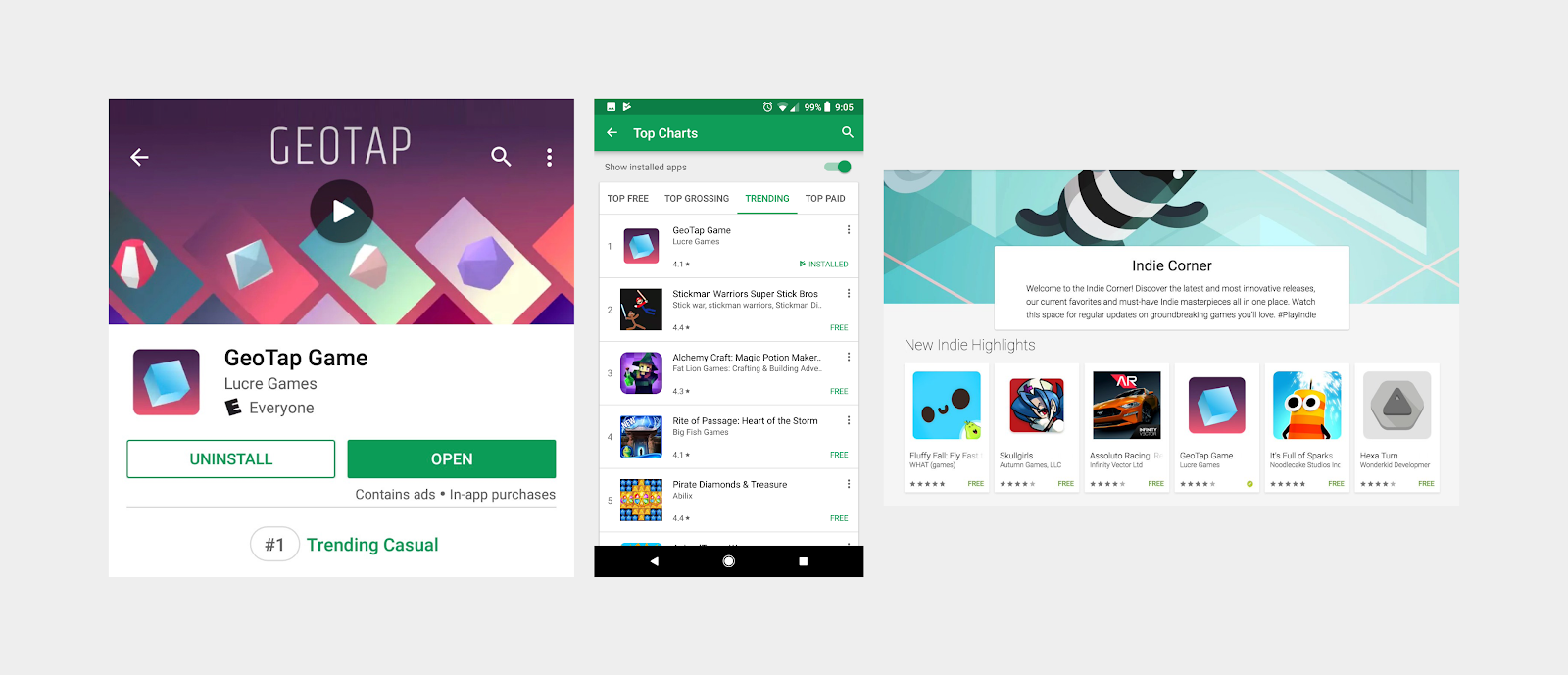
?Do you answer to user reviews on the store? Have you learned anything from there?
We answer to every review on the App Store and Play Store. It’s a great way for us to learn more about how our game is received and the reviews on the marketplaces are often the most useful and transparent. It’s also one of the few direct lines of communication to our players. Sometimes a 1-star review turns into a 5-star review. Sometimes it doesn’t change anything. Oftentimes, people writing later reviews acknowledge our engagement and dedication. Overall we’re super happy to have a dialogue with our players. We know there’s a lot of options in the mobile gaming so we’re thrilled that anyone takes the time to experience our games.

?We see that you provide different modes for the users? Which one is the most popular and why did you introduce them?
We launched with a single mode: Classic. Soon after added 2 more: Tranquil and Focus. The finale version includes 3 more modes: Jawbreaker, Countdown and Fly By. Classic mode is by far the most popular. We added new modes to explore how a simple game mechanic could be pushed to give players a different experience.

?What is your monetization strategy?
GeoTap is monetised with advertising. Every 3–5 games there’s a skippable interstitial ad before new plays. After each game, especially high scoring ones, the player can choose to double their coins by watching a reward ad.
We see on average, about 5% of players choosing to double their coins. Some people just want to play the game and relax, so we have an IAP option to remove all ads. We see about 2% of revenue from this option and <1% of our install base using this.

When a user loses you there is an option for the user to pay with coins or watch a video to revive. Players prefer to spends coins to revive rather than watch an ad by about 3:1
?Do you use localisation within the game?
GeoTap is localised into 11 languages outside of English. We were required by Google to localise for Korean and Japanese markets during the feature window, so we decided to add Spanish, Russian, Portuguese, Mandarin, Cantonese, French, German, Italian, and Malaysian.
Our players’ most common languages are English, Spanish and Russian.
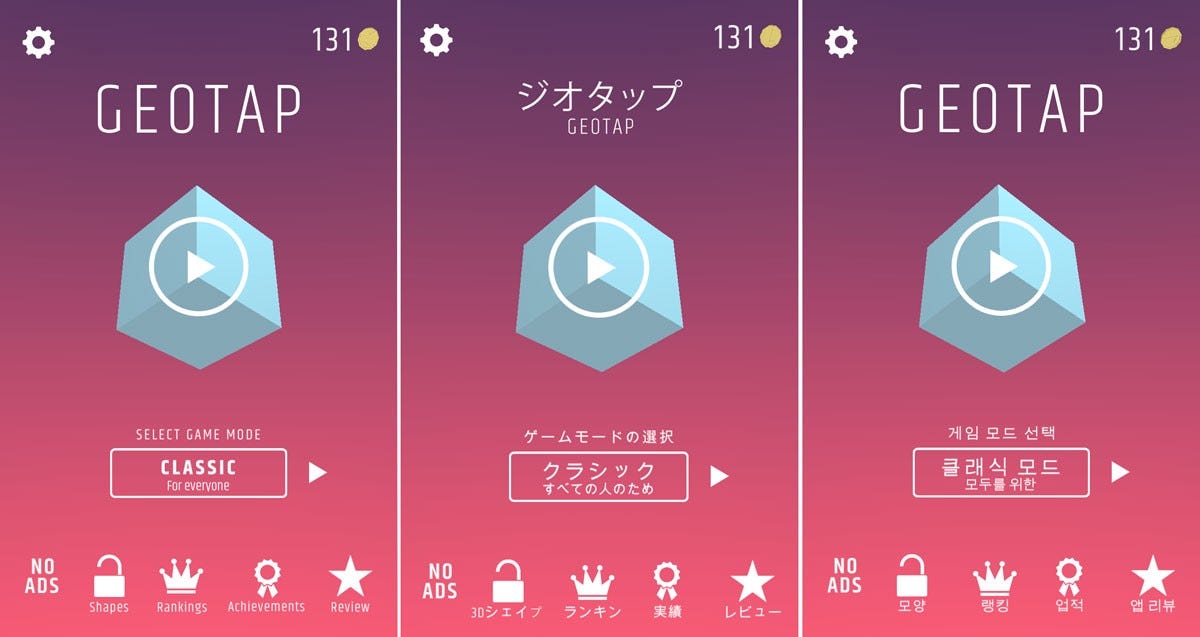
?We see that you use google’s game leaderboards and achievements. Why did you introduce them and how do they affect the engagement in the game?
We wanted to give players something to shoot for and the leaderboard/achievement system is made for that. Around launch time, there was a lot of jockeying for leaderboard positions. We haven’t noticed much engagement specifically from the achievements, but we’re happy our players can work toward something extra.

?How and what do you A/B test?
We are implementing Unity’s Remote Settings feature in their cloud services. This allows us to dynamically change settings on the fly (games until ad, coin bonus multiplier, coin rate per game mode, etc) based on the users segmentation. This has also been a great way to also A/B test features without running a new build. We can deploy several features in an update and turn them on or off via the Remote Settings dashboard.
?What are the next steps?
We couldn’t be happier with GeoTap. What started out as a lunch chat, became a valuable game in our repertoire. We’re taking all the experience we gained from that project and bringing it to two more mobile titles. One is a psychedelic action game and the other is a twist on a classic puzzle game with our unique visual style. We are actively designing two other games as well and can’t wait to share all of these experiences with our players.
Finding a way to make your game stand out in the crowd is a more important than ever. We are constantly looking for inspiration outside of the gaming industry for ways to get our games to look and feel special.
If you’d like to keep in touch, please signup to our newsletter, play some of our game jam games, or follow us on twitter.
Do you want to distribute your survey? Pollfish offers you access to millions of targeted consumers to get survey responses from $1 per complete. Launch your survey today.
Global GSK Shingles Survey Insights
Original Insights,The Pollfish Blog
February 24, 2024
Shingles misconceptions: new global survey commissioned and funded by GSK highlights widespread…
B2B Sales Emails: Are they Effective or a Nuisance?
Original Insights,The Pollfish Blog
September 6, 2022
Are B2B sales emails a thorn in your side? Do they drive you crazy? Virtually all white-collar…
